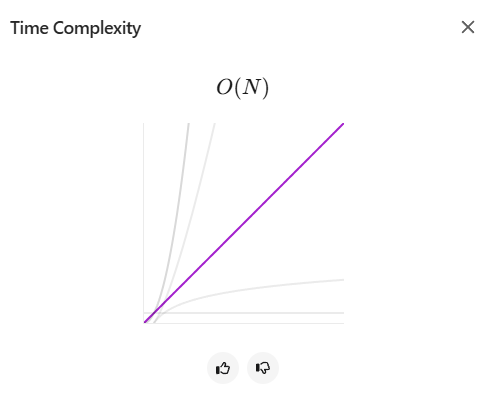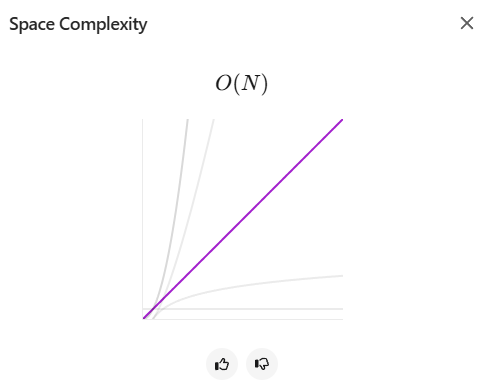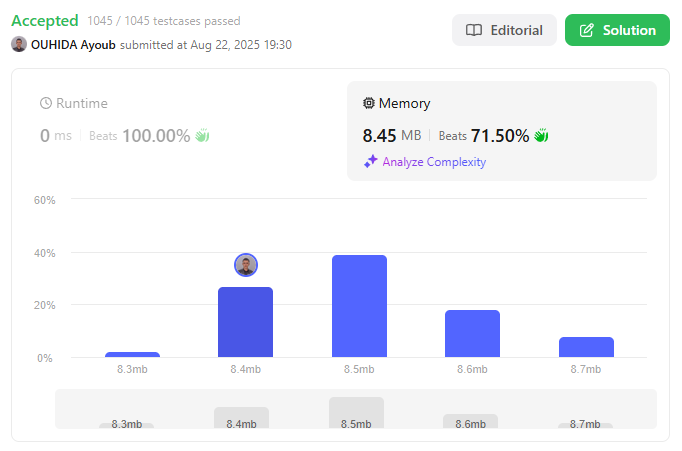The task is to reverse the digits of a 32-bit signed integer.
- Input: an integer
x. - Output: the reversed digits of
x. - Constraint: if the reversed value goes outside the 32-bit signed integer range
[-2,147,483,648, 2,147,483,647], return0instead.
Examples:
123 → 321-123 → -321120 → 211534236469 → 0(overflow)
You can read the full problem statement here:
🔗 LeetCode – Reverse Integer
-
Time Complexity:
O(n)
✅ Beat 100% of C submissions on LeetCode. -
Space Complexity:
O(n)
📦 Beat 71.5% of C submissions.
| Case | Screenshot |
|---|---|
| Time Complexity |  |
| Space Complexity |  |
| Accepted Submission |  |
Solving this problem was a journey of debugging and optimization.
At first, I struggled with overflow cases (1534236469, -2147483648) and the precision issues of pow().
By switching to an integer-only power function, adding early overflow checks, and handling negatives carefully, I finally built a robust solution.
Seeing the result — 100% time and 71.5% space — felt rewarding.
It showed me how important it is to consider edge cases and to think about both performance and correctness.
Next step: I’ll explore how to reduce space complexity closer to O(1) while keeping the same speed.